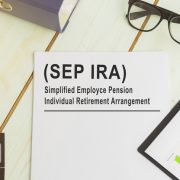How Does a Self-Directed Roth IRA Work?
A Self-Directed Roth IRA is a popular type of retirement account that offers investors tax-free growth and distributions. Unlike traditional IRAs, contributions to a Roth IRA are with after-tax dollars, which means that withdrawals in retirement are tax-free. (After all, the government figures, you’re paying the taxes upfront, rather than at the end, the way pre-tax accounts typically work.)
A Self-Directed Roth IRA offers even more flexibility by allowing investors to choose their own investments, including alternative assets such as real estate and private equity. But what does the account look like in practice? Let’s explore the details of how a Self-Directed Roth IRA works when you use one of these accounts to put more control in your hands.
Self-Directed Roth IRA Contributions
Like all IRAs, there are annual contribution limits for a Self-Directed Roth IRA. For 2022, the maximum contribution limit was $6,000 for individuals under the age of 50, and $7,000 for individuals over the age of 50. Contributions can be made until the tax-filing deadline, which is typically April 15th of the following year. One rare downside of Roth IRAs? The fact that these contribution limits aren’t even higher!
Using a Self-Directed IRA For Different Types of Investments
One of the main advantages of a Self-Directed Roth IRA is that investors have complete control over their investments. This means that they can invest in a wide range of assets, including real estate, private equity, precious metals, and more. However, it’s important to note that there are certain prohibited investments, such as collectibles and life insurance contracts. Investors should also be aware of any potential tax implications of certain investments, such as UBTI (Unrelated Business Taxable Income) for certain types of investments. When you use a Self-Directed IRA, you’re in charge—which means you’re also responsible for making good choices.
The Tax Benefits of a Self-Directed Roth IRA
The biggest advantage of a Self-Directed Roth IRA is the tax benefits. Since contributions are made with after-tax dollars, all earnings within the account grow tax-free. This means that investors can potentially earn significant tax-free growth over the years, which can be especially advantageous for younger investors with a longer time horizon. Additionally, since withdrawals in retirement are tax-free, investors can potentially save thousands of dollars in taxes over their lifetime.
While contributions to a Self-Directed Roth IRA can be withdrawn at any time without penalty, earnings can only be withdrawn tax-free after the age of 59 1/2 and if the account has been open for at least 5 years. Withdrawals before age 59 1/2 may be subject to a 10% early withdrawal penalty, as well as income taxes on the earnings. However, there are certain exceptions to this penalty, such as for qualified first-time homebuyers and certain types of medical expenses.
Are There Any Risks Associated with Self-Directed Roth IRAs?
Like all investments, a Self-Directed Roth IRA carries risks that investors should be aware of. While the tax-free growth and distributions can be attractive, investors should also consider the potential risks associated with certain types of investments, such as real estate or private stocks. Additionally, since a Self-Directed investment account may require more control from your end, investors may need to be prepared to devote more time and resources to managing their investments.
A Self-Directed Roth IRA can be an attractive option for investors seeking tax-free growth and flexibility in their retirement savings. By choosing their own investments, investors can potentially earn higher returns than with traditional investment options.
Interested in learning more about Self-Directed IRAs? Contact American IRA, LLC at 866-7500-IRA (472) for a free consultation. Download our free guide or visit us online at www.AmericanIRA.com.








